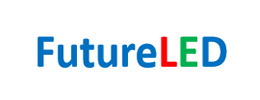Outdoor advertising is an important part of the urban landscape, equivalent to the city's image card. With the development of informatization and intelligence, large-scale digital signage will gradually replace other types such as light box advertisements and neon lights, with emphasis on the vigorous development of subdivided products such as large LED screens and LCD walls.
The annual outdoor large-scale digital signage scale was nearly 15.3 billion
With the gradual control of the epidemic in the second half of the year, the economy has begun to recover, and outdoor advertising has returned to life. According to data from RUNTO, the scale of the outdoor large-scale digital signage market for the whole year of 2020 is close to 15.3 billion yuan, a slight increase over the same period. 0.3%. In the same period, according to the "Quarterly Report on the Analysis of the LCD Digital Signage Market in Mainland China", the scale of outdoor small digital signage was less than 1 billion.
Outdoor large-scale digital signage started late in my country, especially the development of large LED screens was active with the hosting of the 2008 Olympic Games, and then entered a period of vigorous development. Benefiting from the rise of the "night economy" and the pull of new infrastructure policies, it is expected that the annual growth rate of the outdoor large-scale digital signage market will remain above 10% in the next five years, and the market size will reach more than 27 billion yuan in 2025.
According to RUNTO's research, outdoor large-scale digital signage is mainly used in the information release of commercial buildings, accounting for nearly 40%. The demand for outdoor digital signage in buses and subways is second, accounting for more than 20%.
In recent years, LED screens have become the first choice for media release due to their advantages in construction cost, brightness, and color display effects. In the display area of more than 500 square meters, large-scale digital signs mostly use LED screens. Compared with LCD walls, due to their irreplaceable characteristics, they are separately classified as a category of application scenarios, called super-large LEDs. The proportion of super large LED screens is about 17%, and the compound growth rate is the fastest in the last three years, as high as 9%. Other typical application scenarios include aviation terminals, rail transit platforms, store terminals, school campuses, etc.
In the publicity and display scenes of building media, shopping malls, catering and retail, the advertising effect of LED large screens is far better than traditional outdoor billboards. The advertising carrier is no longer a static single function. In comparison, full-color LED advertising has a stronger dynamic visual impact and a higher conversion rate for brand advertising.
In the era of big data, LED large screens continue to innovate in terms of hardware and content in order to conform to the emerging trend of outdoor media development.
The visual performance is more diverse. Glasses-free 3D technology has matured, and similar creative effects have appeared in cities such as Chengdu, Chongqing, and Shanghai. In the future, more trend-setting new visual performance technologies will be applied to the outdoor LED screen advertising media market.
From single communication to audience participation and interaction. Combining popular WiFi networks, WeChat QR codes, mobile apps, and augmented reality technology, multi-screen interactive technology, facial expression recognition technology, human-screen interaction technology, etc., to achieve two-way interaction with the recipient group.
Rich content and multi-screen linkage dissemination. Operational content is no longer an advertising carrier, but can also spread a variety of rich video content such as public welfare, broadcast news, and information. Under the construction of a smart city, multiple screens will achieve simulcast linkage, breaking the broadcast mode of pure commercial advertising information on LED screens, so that audiences have higher information value and stickiness.






